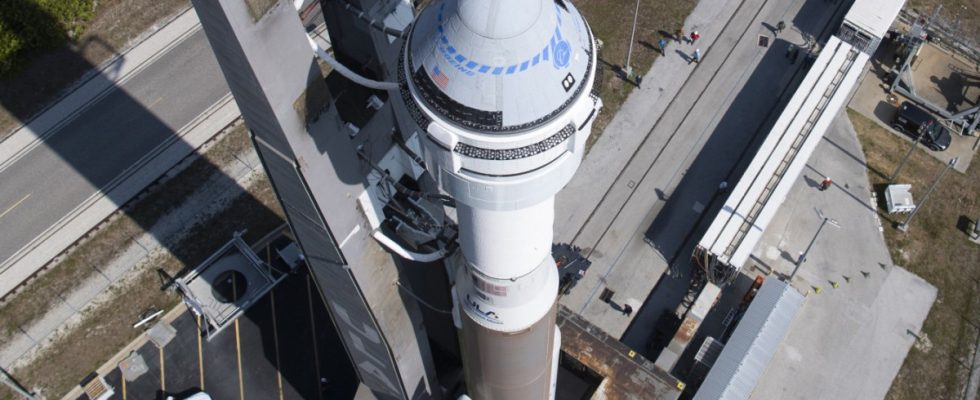If Nasa in the short term a press conference starts, then this does not bode well in view of the PR choreography of the American space agency, which is otherwise often worked out weeks in advance. This time it was actually a mission delay with an announcement, which Nasa had to announce late Thursday evening German time due to various problems. It is another episode in the Boeing company’s hitherto unsuccessful attempt with their capsule Starliner to finally be able to transport astronauts to the International Space Station ISS. Exactly what the former newcomer company Space-X has been doing successfully for three years. So now NASA has the one planned for July Starliner-First flight postponed indefinitely.
What happened? Anyone who wants to jump out of an airplane from a height of several thousand meters will refrain from doing so if it turns out beforehand that the parachute cannot always withstand the minimum weight as previously calculated. Exactly this is at Starliner the case. Already a week ago NASA reported that the load limits would have to be checked again based on current certification data. Boeing program manager Mark Nappi has now confirmed that the safety of the system drops “quite significantly” and becomes a problem if one of the three main parachutes fails. However, the parachutes are vital for the crew of the capsule when they have to slow down on their return to Earth before splashing in the ocean.
The trauma of the Apollo 1 capsule fire in 1967 runs deep
“The safety of the crew continues to be a top priority for NASA and its suppliers,” said Nasa manager Steve Stich before Pentecost, almost apologetically about the new problems. However, these are not uncommon in astronautics. The second main reason for the delay is all the more serious: it turned out that the adhesive tape used to cover the wiring harnesses of the electronics in the capsule could ignite “under certain conditions”. Outsiders may be surprised to learn that this adhesive tape “is usually used in space travel,” according to NASA. This, although the fire of the Apollo-1capsule in 1967 became a trauma in Nasa history. At that time, all three astronauts died during a test at the ramp in Cape Canaveral/Florida.
How long does Boeing now need to solve the problems with the Starliner, which incidentally were already present on the two unmanned test flights, is unclear. Also, whether the flight later this year caught up can be. According to Boeing, the capsule may have to be completely disassembled again. However, the group does not want to set up an independent committee, as requested by NASA security advisors, but rather report to the authority on the progress.
Starliner capsule before its first unsuccessful test flight at the end of 2019 in a NASA hangar in Cape Canaveral/Florida.
(Photo: NASA, Boeing/AFP)
The Starliner should actually have left Florida for the ISS with the Nasa astronauts Barry Wilmore and Sunita Williams on July 21 at the earliest and stayed there for about a week. This date had also been postponed several times before. The constant delays have cost Boeing up to $883 million since 2020, according to the company. The StarlinerA year ago, the test flight to the ISS without astronauts was only successful on the second attempt. The premiere failed in December 2019 because the capsule could not turn in the direction of the ISS due to problems with the on-board clock, software and communication in Earth orbit.
The private flights also show that money can be made with them
Because of the end of space shuttles In 2011, NASA had invested $8.5 billion in the so-called commercial crew program to avoid sharing flights in the Russian Soyuz-Capsule to be dependent. Space-X and Boeing were then awarded the contract as private feeders to the ISS. Including an astronautical test flight, Space-X has had seven NASA missions with a total of 26 ISS astronauts in its capsule since 2020 Crew Dragon flown to the ISS, plus two private science flights by the provider Axiom with a total of eight passengers, the latter flight has just returned successfully to earth.
The private flights also show that money can be made with it, there is talk of 55 to 65 million dollars per seat at Space-X. And the Boeing group, which, according to earlier NASA information, calculates around 90 million dollars per ticket, finally wants to benefit from this new business area. Because even if the ISS is decommissioned around 2030, there will probably be some commercial space stations that are already in the planning stage. Officially, NASA is still behind Boeing. After all, in addition to Space-X, you “urgently” need another provider of such flights.

